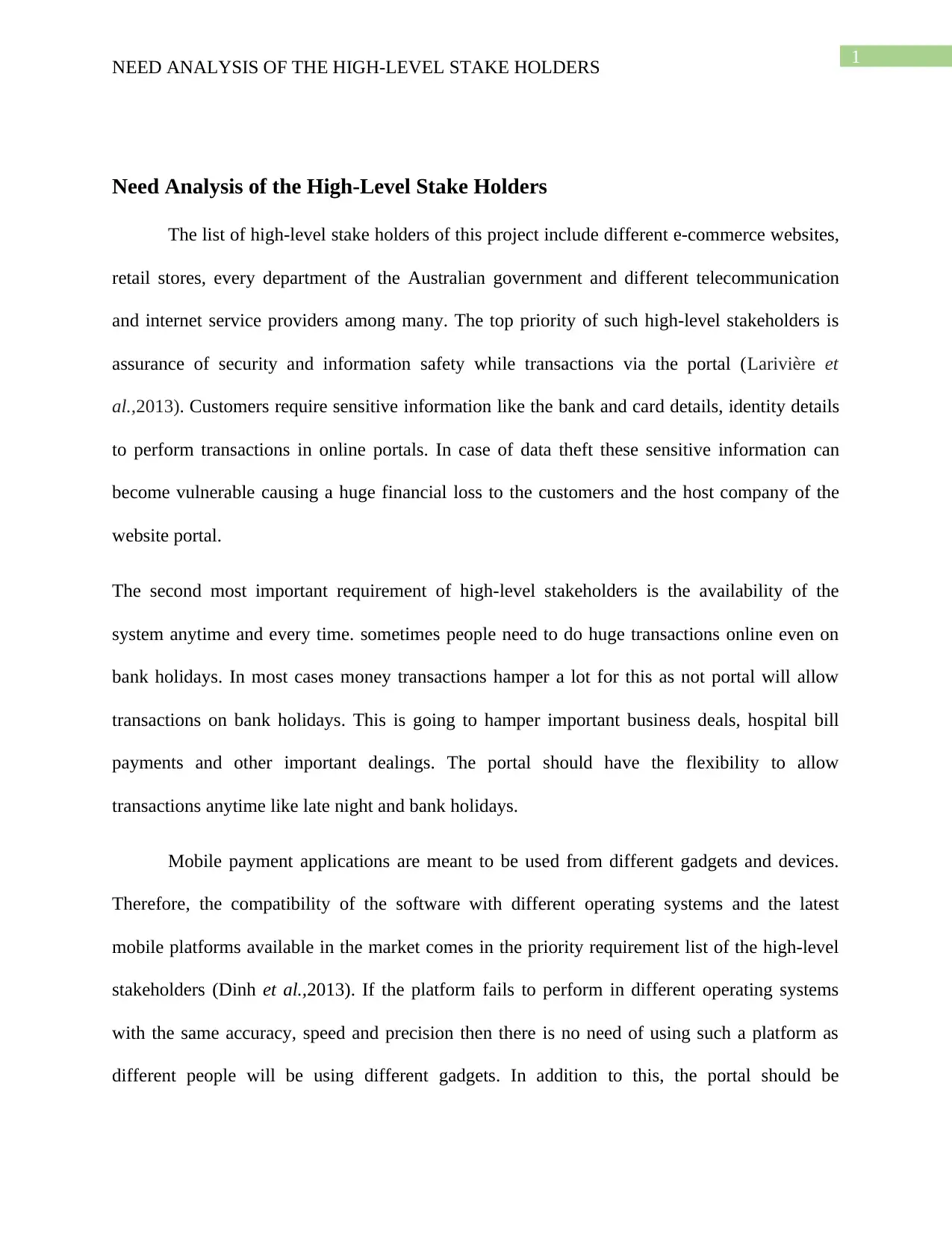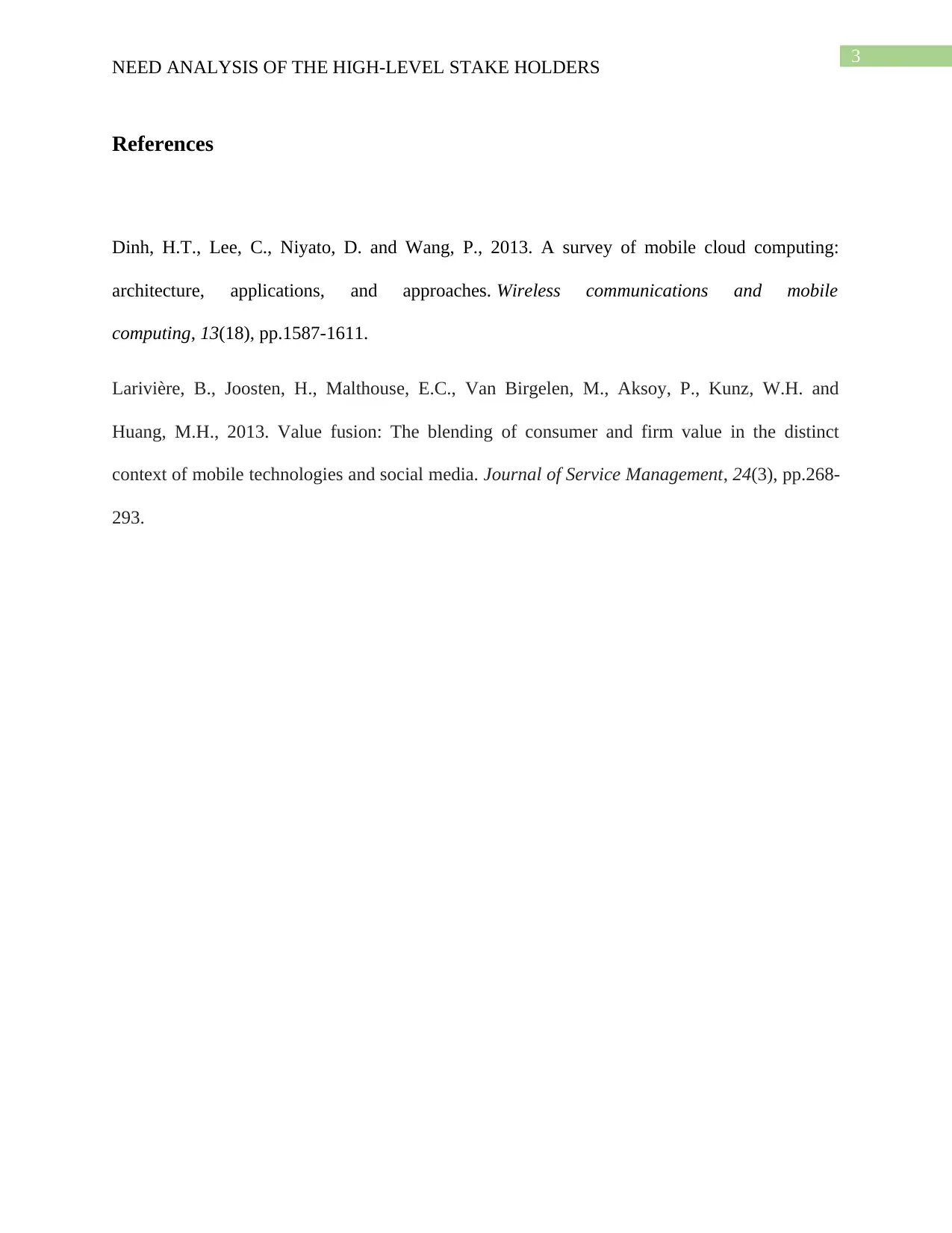Mobile Payments System: Needs Analysis for High-Level Stakeholders
VerifiedAdded on 2023/06/03
|4
|516
|115
Report
AI Summary
This report, prepared for the Digital Transformation Agency (DTA) of the Australian Government, analyzes the needs of high-level stakeholders regarding the implementation of mobile payment systems. The stakeholders include e-commerce websites, retail stores, government departments, and telecommunication providers. The analysis prioritizes security and information safety, ensuring the protection of sensitive customer data during transactions. Availability, system compatibility with various operating systems and devices, and interoperability with different applications and payment platforms are also highlighted as crucial requirements. The report emphasizes the need for seamless communication with various banks and the ability to perform transactions anytime, including bank holidays. The study aims to ensure financial transactions are secure and efficient, contributing to convenient and accessible payment solutions for consumers, businesses, and government entities.
1 out of 4





![[object Object]](/_next/static/media/star-bottom.7253800d.svg)